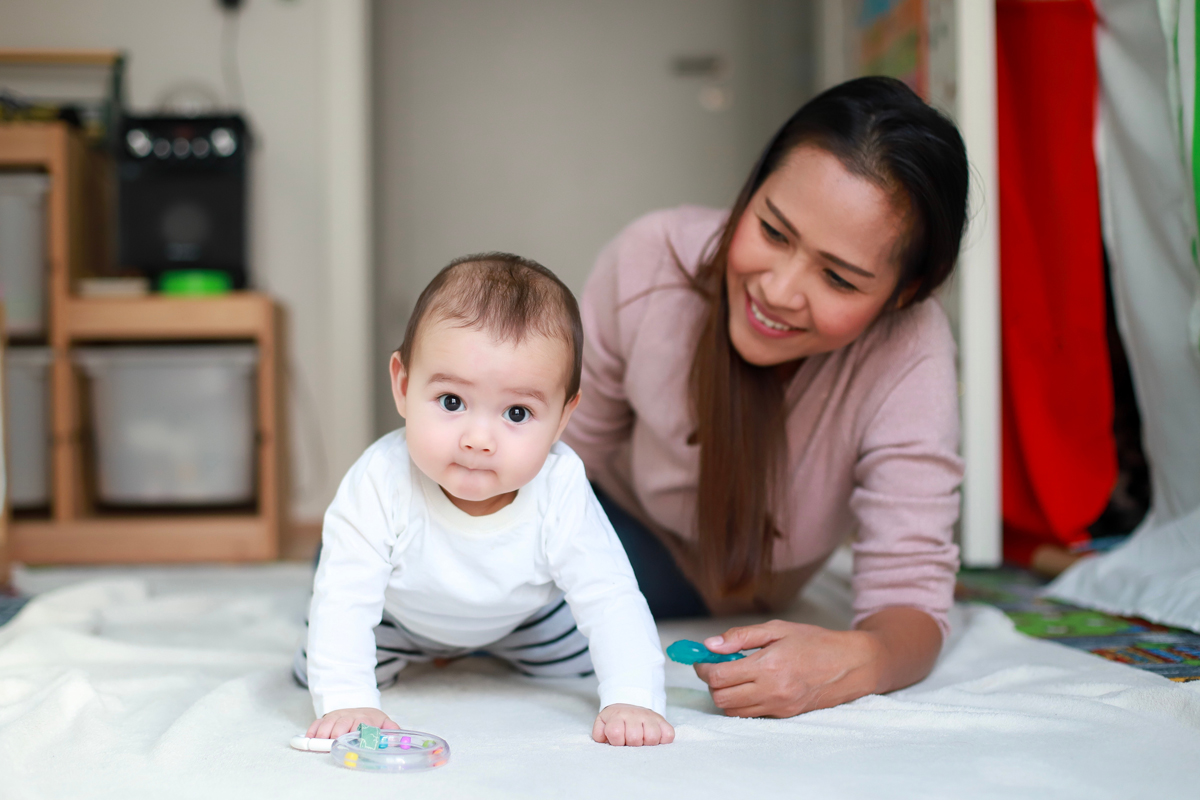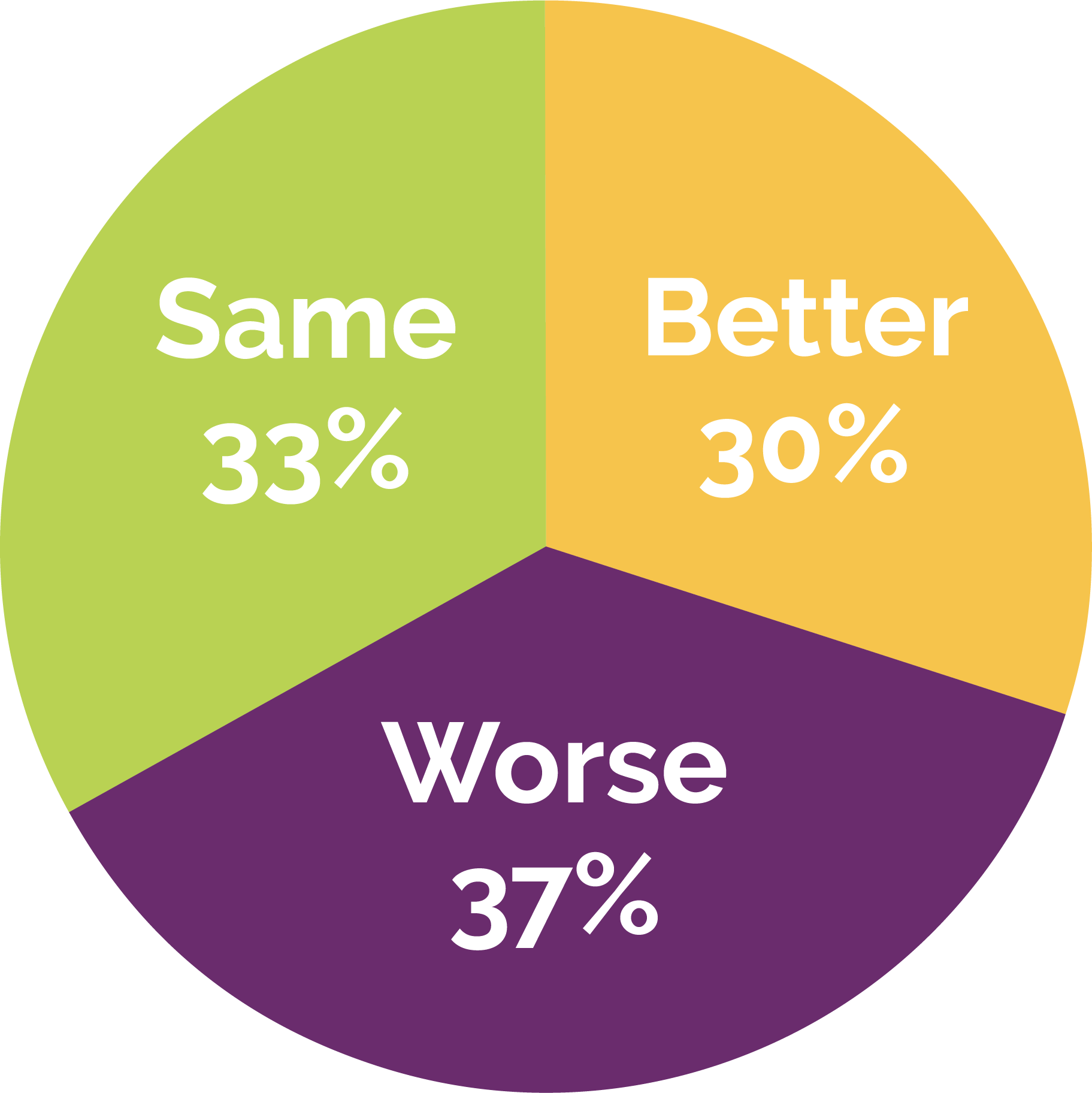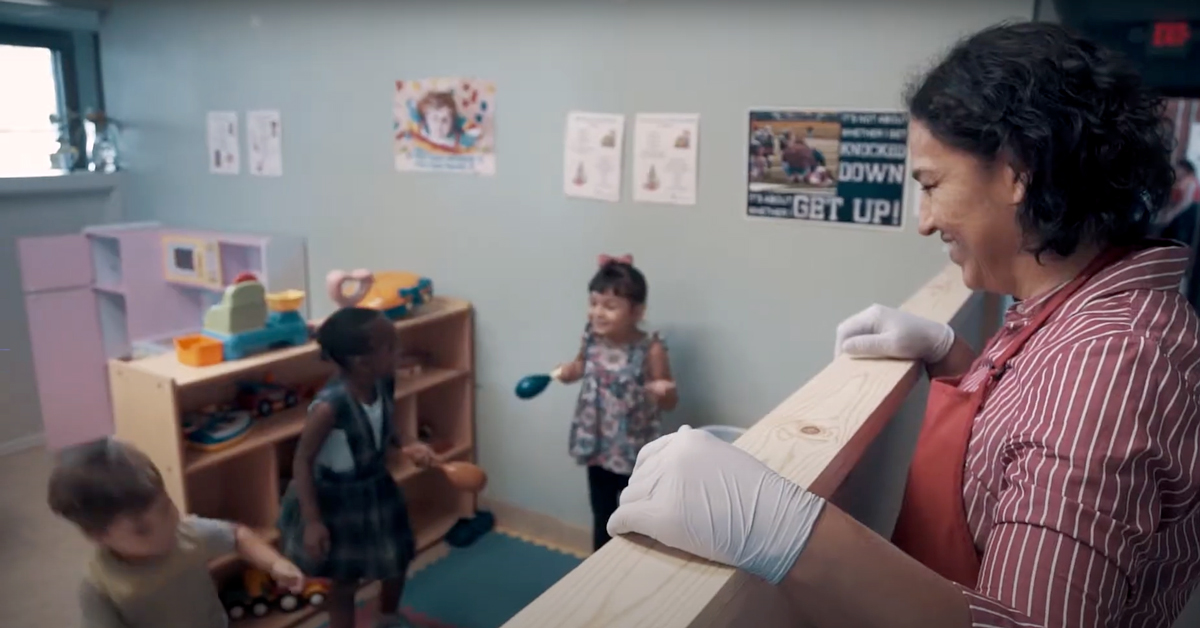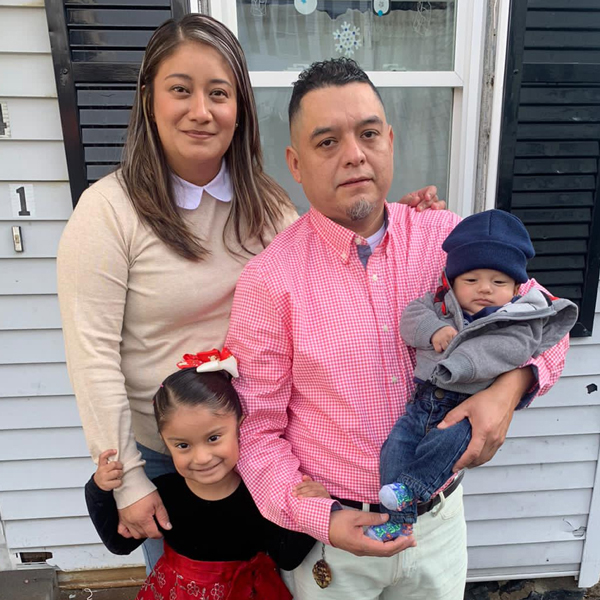National Latino Family Report 2024:
Strength, Resilience, and Aspiration
A comprehensive study of the economic and social issues impacting Latino families with children prenatal through five years old.

Introduction
This report presents an overview of the Latino community amidst economic challenges and a dynamic socio-political landscape. Abriendo Puertas/Opening Doors, in partnership with UnidosUS and BSP Research, surveyed and interviewed 1,500 Latino families with young children (prenatal through five years old) across the United States to understand the key issues, concerns, and aspirations that shape their daily lives and their vision for the future.
Latino families demonstrate remarkable resilience, resourcefulness, and a strong commitment to community, despite facing hardships like rising living costs and barriers to economic advancement.
The Pew Research Center reports that Latino eligible voters have increased by 4.7 million since 2018, representing 62% of the total growth in U.S. eligible voters.[1] As a significant and powerful voter base, representing around 34 million eligible voters in the 2024 election,[2] it is crucial for institutions and policymakers to consider their voices, learn about their proposed solutions, and actively engage them in the legislative process.
[2] ABC News
Jump to
Health &
Economic Well-being

As Americans entered 2023, predictions were dire for the economy, with rising interest rates and spiking inflation. However, over the course of the year, the U.S. saw increased economic output, improved consumer spending, and a reinvigorated job market. The Department of the Treasury reported the U.S. economy grew at a rate of 5.7% in 2023—the highest growth rate since 1984.[3]
However, Latino families with young children felt the impact of economic fluctuations on their daily lives. With the cost of living (also known as consumer price index) increasing 3.1% since 2022,[4] our survey found the top concerns for Latino families are the rising cost of living and inflation and the need for improved wages and income.
Latino families remain persistent in their quest for financial stability. Respondents not only seek immediate financial relief but advocate for permanent changes that lead to sustainable economic growth, improved health outcomes, and better educational opportunities for their community.
Top 6 issues Latino families want the government to address

Rising cost
of living

Improving wages and income

Gun violence and mass shootings

Lowering healthcare costs

Education

Affordable, high-quality child care
Economic Resilience

How has your economic situation changed over the past year?
What have you done to improve your family’s financial well-being this year?
Are you planning long-term for your child’s financial future?
A recent article by the Washington Post found that less than half of the promised social safety net support through programs like Medicaid, SNAP, and TANF actually made it to the American people.[5] Another report from The Center for American Progress showed that the regions with higher underrepresented populations had policies with weaker safety nets than the regions that don’t need them.[6]
Social supports initiated in the 2020 American Rescue Plan, such as stimulus payments, expansions to SNAP, and the Child Tax Credit resulted in a historic drop in child poverty rates by 2021[7]—especially for Hispanic children.[8] Despite their immense success, these programs were slashed.
In absence of reliable social support structures, Latino families with young children rely more on credit cards for emergencies (42%) and borrowing from friends and family (42%)—indicating both the financial strain and the strong support structures within the community.
How have you managed your finances with rising costs of living?
On top of adjusting to economic instability, many families are raising concerns over physical security with climate change affecting their working conditions.
Families share that they’ve experienced increased work exposure to extreme heat, floods, tornados, wildfires, hurricanes, and drought. A recent study by the Environmental Protection Agency finds Hispanic and Latino individuals are 43% more likely to live in areas with the highest projected reductions in labor hours due to extreme temperatures.[9] As a result, 75% of young Latino voters are calling for the President and Congress to aggressively combat climate change.[10]
Impact of climate on Latino working conditions
Solutions
In response to their economic challenges, Latino families express strong support for solutions that enhance their financial stability and quality of life. A key area of consensus is the call for an increase in the Earned Income Tax Credit (EITC), a policy that directly boosts low-to-moderate income families' earnings. The support for child savings account programs is also notable, illustrating a commitment to long-term financial planning and the importance of investing in their children's future. Currently, over 39 states have implemented popular government-sponsored child savings account programs.[11]
Families are not only seeking better-paying jobs but are also interested in avenues that lead to career advancements. Respondents voice a future-focused approach to economic empowerment, especially for their children.
Latino support for higher education
What career would you most like to see your child pursue?
STEM: Science, technology,
engineering or math
Accounting
or finance
Latino support for social safety nets
Health & Well-being

In our study, Latino families with young children express the desire for more work-life balance and community connectedness. Parents emphasize a desire to spend more quality time with their children, alongside improving health and physical activity for their family.
Neighborhood improvements are a key concern to families, they advocate for crime reduction, quality parks and playgrounds,and more access to healthy foods.
Low availability of healthy food is an urgent and ongoing need. A study by the U.S. Department of Agriculture found that food insecurity was higher for Hispanic/Latino homes with children.[16] Lower income communities are more likely to be located in a “food desert” where the nearest grocery store can be as far as 10 miles away—and Latino populations make up 15% of food desert communities.[17]
[16] https://www.ncbi.nlm.nih.giv/
[17] Bread.org
What quality-of-life improvements would you like in your neighborhood? Part I
What resources do you need to better manage stress/anxiety?
Solutions
Latino support for healthcare policies
[18] NPR
What would help you access more healthy, nutritious food?
What quality-of-life improvements would you like in your neighborhood? Part II
Early Education
& Child Care

Top 3 issues the government should address to improve child well-being

Access to quality, affordable child care/early learning

Child safety

Cost of college tuition
Child Care

Has your child received child care?
How much do you spend on child care per month?
Top child care challenges for Latino families
Despite these financial constraints, families place quality as the highest priority when looking for care and early education. Parents name trustworthiness, experience, quality learning, and fair wages among the most important criteria.
It’s important to note that the overwhelming majority of our respondents (87%) prefer that a family member provides child care. In a study by the Institute for Family Studies, it was shown that only 14% of Latino families preferred full-time paid child care, compared to the 62% who preferred parent or family child care.[19]
Top qualities Latino families look for in child care
Bilingualism

Do you want your child to be bilingual in English and Spanish?
This sentiment is further emphasized by the fact that 90% of parents express a desire for their children to be bilingual in English and Spanish, highlighting the value placed on bilingual proficiency not just as a cultural asset but also as a vital skill in a globalized world.
Research has shown that access to quality bilingual programs early in life is essential. By 8th grade, bilingual learners have been shown to outperform monolingual peers in reading, math, and attendance. [20] What’s more, research says bilingual individuals can make 5-20% more per hour than those who only speak one language.[21]
Among respondents, 67% speak Spanish at home or with friends on a daily basis. This everyday practice of bilingualism at home underscores its integral role in family life and identity.
[21] Washington Tech
What are you doing to provide your children with a good future?
Solutions
Latino families are calling for a holistic approach to early education, one that includes fair compensation for educators, increased access to quality programs, and a strong emphasis on bilingual and multicultural learning.
The prenatal to three-year period is widely recognized as crucial for child development. Early experiences during this time shape the brain’s architecture and have long-lasting effects on learning, behavior, and health. Research shows that access to high-quality early childhood services correlates with improved academic success, educational attainment, future earnings, well-being, and reduced crime rates.[22][23] In a report also published by Abriendo Puertas/Opening Doors and UnidosUS earlier this year, the Latino Infant Initiative Policy Agenda urged, “Prioritizing and investing in children and families during this period maximizes every child’s potential.”
Latino families strongly advocate for increased state investment in affordable child care. This includes expanding programs like Head Start, with 89% of families favoring more funding to make these programs more affordable or free. Additionally, 91% of families advocate for increased funding for parent and family engagement, recognizing the vital role of family involvement in early learning.
[22] Elango, Garcia, Heckman, Hojman
[23] Science
Latino support for more early childhood investment
An impressive 93% support increased compensation for educators, signaling a recognition of the value and impact of quality teaching in early childhood development. Similarly, 92% of families support funding initiatives to encourage Latinos to earn degrees and credentials, facilitating their entry into the early childhood workforce. This not only addresses the need for more educators but also promotes cultural representation and understanding within the educational system.
The strong preference for family-provided child care (88%) among Latino families reflects deep-rooted cultural values where trust is paramount. Understanding this preference is crucial for policymakers and community support organizations. Initiatives aimed at supporting Latino families, such as financial assistance, child care subsidies, or family support programs, need to be tailored to recognize and reinforce the role of family in child care.
Conclusion
This survey reveals a portrait of the Latino community marked by resilience, aspiration, and a deep sense of community. While facing economic and health challenges, families with young children are proactive in seeking solutions, emphasizing education, mental health, and economic stability.
Latino families’ collective voice and experiences provide crucial insights for policymakers and community leaders in addressing the needs and harnessing the strengths of the community in 2024 and beyond.
About This Study
Survey Methodology
Acknowledgments
We extend our deepest thanks to the following partners and collaborators on this report:
Report designed by MediaDesk
Parents:
Cyntia Flores
Guadalupe González
Silvia Vasquez
Partners and funders:
J.B. and M.K. Pritzker Family Foundation
Riverside County Child Care Consortium
Robert Wood Johnson Foundation
Voices for Healthy Kids American Heart Association
 Survey was partially funded by the National Science Foundation subaward as part of the Child Trends Award # 2313936 Advancing Latino Parents' Access and Engagement with Science-Based Strategies for Climate-Resilient Parenting through a National Media and Community Campaign.
Survey was partially funded by the National Science Foundation subaward as part of the Child Trends Award # 2313936 Advancing Latino Parents' Access and Engagement with Science-Based Strategies for Climate-Resilient Parenting through a National Media and Community Campaign.








